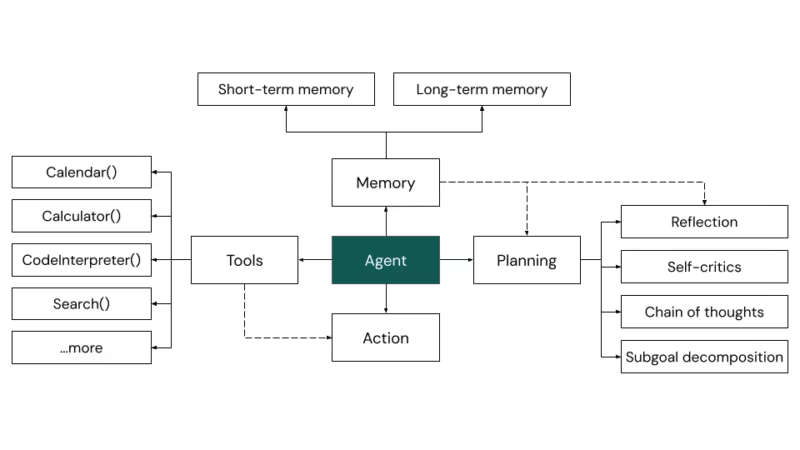A Simple Definition of What Is, and What Is Not, an Agentic Application
There is a huge amount of buzz around agentic applications at the moment. We’ve seen significant advances in generative AI have driven lots of organizations to experiment with using the technology.This mostly takes the form of companies either building their own agentic applications, or adopting agentic applications that have been built by a third-party.
A simple definition of agentic application
But what exactly is an “agentic application”? In simple terms, I would argue that an agentic application is any application that makes use of a Large Language Model (LLM) under the hood.
What these applications do, how they work with machine learning, and how they leverage LLMs for business process optimization are all things that we, collectively, are figuring out. Most people agree that GenAI is going to change the world, but the technology is so early, and developing so fast, that we can only speculate and experiment to figure out what that future looks like.
A controversial definition of agentic application
That simple definition is not uncontroversial. Most commentators have instead defined agentic applications in terms of their “autonomy” or their “agency”.
Research on agentic systems existed before LLMs. In 1995, Wooldridge and Jennings described two types of AI agents. Basic agents that can work independently, interact with other agents, respond to changes, and work toward goals. And advanced agents, which have the same abilities plus human-like traits such as beliefs, desires, and knowledge.
Further, they point out that it is possible to use LLMs in applications in ways that do not appear to be “agentic”. (You can, if you wish, use ChatGPT as a calculator - if you do, this does not look like an “agentic application” - it looks like an old fashioned calculator, even if there is an LLM under the hood.)
But a useful definition
In spite of those objections, I would argue that defining agentic applications in terms of systems that use LLMs is still a useful definition.
Whilst work on agentic systems pre-dates LLMs, LLMs have transformed what agentic applications are able to do. Previous techniques in AI,including both supervised and unsupervised learning, meant that applications could be written to solve very tightly defined problems like classification - is this user a human or a robot? Is this transaction fraudulent or not? Which customer segment does this person belong to? What customers does this customer look most similar to?
Now with LLMs it is possible to write agentic applications that can:
- Develop hypotheses about the user in question using data sources and customer service interactionsof the user or her behavior that are worthy of further investigation
- Create new content and/or experiences for the user based on decisions from feedback loops
- Experiment with delivering that content, measuring the result
- Learn and iterate
This is an enormous expansion in capabilities - well beyond what agentic systems were capable of previously.
Another observation is that the architectures of applications that use LLMs are being modeled, more and more, on how human cognition works. Modern agentic AI systems are often architected as multi-agent systems, with different agents using LLMs to perform specific functions, which are coordinated (often by one of the agents in a “conductor” role) so that they’re working to a particular end goal.
Each agent is conceptualized as an individual with goals, memory, some form of perception, and ability to make decisions and to adapt and learn. The high level architectures for these agents are even referred to as “cognitive designs”.

Why agentic applications will be fueled by real-time customer intelligence
Our customers are pushing the boundaries of innovation in AI. They’re building agentic applications that proactively assist users with complex tasks, from managing finances and health to planning trips and conducting research.
But when we speak with product and AI leaders tasked with accelerating their agentic roadmap, we hear a common blocker. It’s not in model training, but in building the underlying intelligence infrastructure needed to reliably feed those models at scale. Without that foundation, agentic applications hit the “cold start problem” because they lack sufficient user context to act in real time.
So we’ve extended our expertise in real-time event data collection, processing, and delivery to design a new real-time intelligence solution for product, engineering, and data science teams building customer-facing agentic applications.
Snowplow Signals provides real-time customer intelligence infrastructure that plugs into your AI and ML stack, giving your agentic applications sub-second access to historical and in-session user data. It’s designed to be developer-first, not an opinionated black box. So you stay in control of your data, logic, and models while Signals handles the heavy lifting of computation and delivery in real time.
Try the Signals Sandbox — spin it up, inspect the architecture, and watch your first intervention fire in under 10 minutes. Or let us show you how Snowplow Signals can help you accelerate your agentic applications roadmap.
¹ Luck and d’Inverno, A Conceptual Framework for Agent Definition and Development (1995), Wooldridge and Jennings, Intelligent Agents: Theory and Practice (1995)

